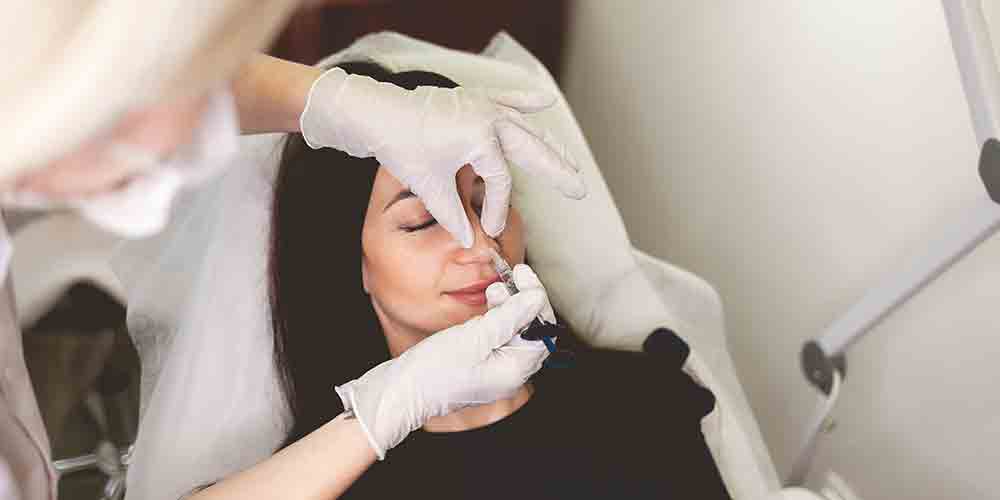Nose Tip Aesthetics
In this method, the nasal tip cartilages are shaped completely from the inside of the nose, that is, without leaving any incisions and traces from the outside, and are fixed to the main carrier cartilage (septum cartilage) in the middle.
In this way, the height and angle of rhinoplasty can be adjusted millimetrically. This affects the naturalness of the result the most. This method is described as an invention that puts an end to nasal droop, which patients and many plastic surgeons complain about very often.
Kiss. Dr. Thanks to the Traceless Cartilage Detection method developed by Deniz Yazıcı and published in the Annals of Plastic Surgery, one of the world's most prestigious peer-reviewed journals, there is no need for second operations. The method is also very effective in correction operations, and noses that have undergone one or more operations before can be corrected with this method.
RHINOPLASTY WITHOUT TOUCHING THE BONES IN SUITABLE PATIENTS (NOSE AESTHETIC)
With this method (Scarless Cartilage Detection), very good results can be obtained in some patients with only a very small intervention in the cartilages in 20-25 minutes under local anesthesia.
NO EXTERNAL INCUTION
In the method, which eliminates the frequently encountered problem of nasal drop and puts an end to the image called 'pig nose', the cartilages forming the tip of the nose are connected to the septum cartilage, which can be defined as the carrier column of the nose, with sutures.
In the past, it was necessary to cut the tip of the nose from the outside to do this, but with the Traceless Cartilage Detection method, the desired angle and height is given to the tip of the nose with stitches placed completely inside the nose without making any external incisions. In this method, natural-looking noses that are not understood to have undergone surgery are obtained, ensuring that the achieved result is permanent and does not deteriorate for life.
THE METHOD IS LOW INTERVENTION TO THE BONE TISSUE
The late results of the method, which has been applied to hundreds of patients for about 15 years, are extremely pleasing. The nasal bones are not carved to provide the balance between the back and the tip of the nose.
The method has 4 important tangible benefits:
* We interfere less with bone tissue.
* We get a more natural image.
* We prevent the nose from falling.
* The recovery time is significantly shortened.
With Traceless Cartilage Detection, there is no need to break the nasal bone in many patients. In suitable patients, an ideal appearance can be achieved even by intervening only on the tip of the nose.
FUNCTION IMPORTANT
Success in nose surgeries cannot be separated from breathing, which is the most important function of the nose. The Traceless Cartilage Detection method also provides solutions to "breathing" problems: The cartilages forming the nose wings are fixed in the appropriate position and the angles that allow breathing are preserved.
"Patients who are going to have surgery for the first time or who have had one or more surgeries before, can both achieve the final image they want with this method and breathe easily, even snoring can be good."
NATURAL APPEARANCE DISCOVERY IN NOSE AESTHETICS: ANGLE FILE
There are a few important details for a natural result. One of them is the image of the area between the two eyebrows, known as the nose root. The depth and angle of this area, where the nose and forehead meet, are extremely important in capturing the natural look. It is understood by almost everyone that the nose, which seems to merge with the forehead and continues at the same angle with the forehead, is operated, and it also causes a long appearance that does not match the facial proportions. Even if the other parts are made perfectly, the nose reveals itself aesthetically just because of this small area; This is especially evident in photographs. The tools used in the past were insufficient to give a sharp angle, and noses that were too hollow or too plump and descending without an angle, such as a ram's nose, could occur.
Kiss. Dr. Deniz YAZICI has developed a rasp that will provide the ideal forehead-nose angle. Angled File and Its Use was accepted by being published in the Journal of Plastic & Reconstructive Aesthetic Surgery, one of the most prestigious medical journals in the world. Dr. It is much easier to achieve the ideal forehead-nose angle with this tool designed by Tezel and manufactured in Turkey. A distinctly angled transition between the forehead and nose is a very important detail in achieving a natural look; It is these details that make up the naturalness and beauty.

Our Clinical Information
He was born in 1981 in Zile district of Tokat. Starting primary school at Rize Atatürk Primary School, Dr. Deniz Yazıcı continued his education life in the Ergani district of Diyarbakır, since his father's place of duty changed since the 4th grade of primary school.




 TR
TR DE
DE